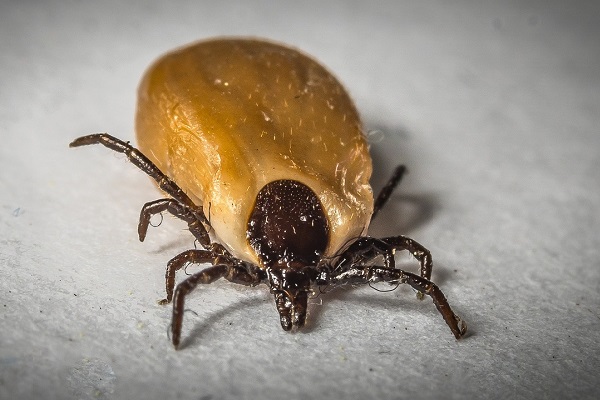Bloodsucking fleas and ticks are a nuisance for humans and animals alike. They also spread diseases like Lyme disease and Rocky Mountain spotted fever. Our climate here in Missouri encourages the growth of tall grasses and thickly wooded regions, both of which are ideal habitats for these parasites.
Fleas
The cat flea is the most prevalent species in Missouri, although we also see dog, human, and oriental rat fleas. Flea and tick bites may potentially spread any number of dangerous pathogens. In the middle ages, fleas were responsible for spreading the plague from rodent populations to humans, and the United States is still vulnerable to plague and typhus. These insects are more than a nuisance at the neighborhood cookout and a problem for your pets, they pose a significant risk to human health and taking the initiative against them is crucial. Take preventative measures against these pests now with our risk-free, pet friendly maintenance program and relax this summer and fall.
Ticks
The lone star tick and the American dog tick are the two most common types of ticks found in Missouri and you will occasionally find the brown dog tick on dogs in the home. The brown dog tick, as may be surmised by it’s name, is a canine-specific pest, carried into the home on a dog’s fur. Ticks are extremely dangerous and should be removed as soon as possible after discovery. Using tweezers, pull the tick straight out from the skin using steady, consistent pressure. Crushing the tick could leave the tick’s head embedded in the skin, so please be careful while removing them. After removal, disinfect the area with soap and water or rubbing alcohol.
Get your pets on prophylactic medication from your vet and then have Crosshair Pest Control come out and treat your yard. Prevention costs less each month than treatment for an infestation plus medical bills for you and your pet. When it comes to removing natural attractants for these pests and, if necessary, applying a chemical barrier to keep them at bay, our educated, licensed, and insured professionals can analyze your specific situation and create a safe and successful procedure based on the principles of integrated pest management.
What to do before your flea treatment.
Vacuuming will help get rid of a lot of the fleas, eggs, and larvae, but it won’t get rid of them all. Thoroughly vacuum carpets, paying special attention to the places your pets hang out, such as furniture legs that pets rub against and deep into cracks and crevices along baseboards. Thoroughly vacuum upholstered furniture and beneath beds. Any area that won’t be treated with chemicals should be meticulously vacuumed and washed. After vacuuming, seal the used vacuum bag in a plastic bag and dispose of it in an outdoor container.
Any technician we send to your home or place of business are fully certified, licensed, insured, and bonded. We’ll get your house back in order so you can feel comfortable and safe again, and we’ll show you how to keep it that way.

